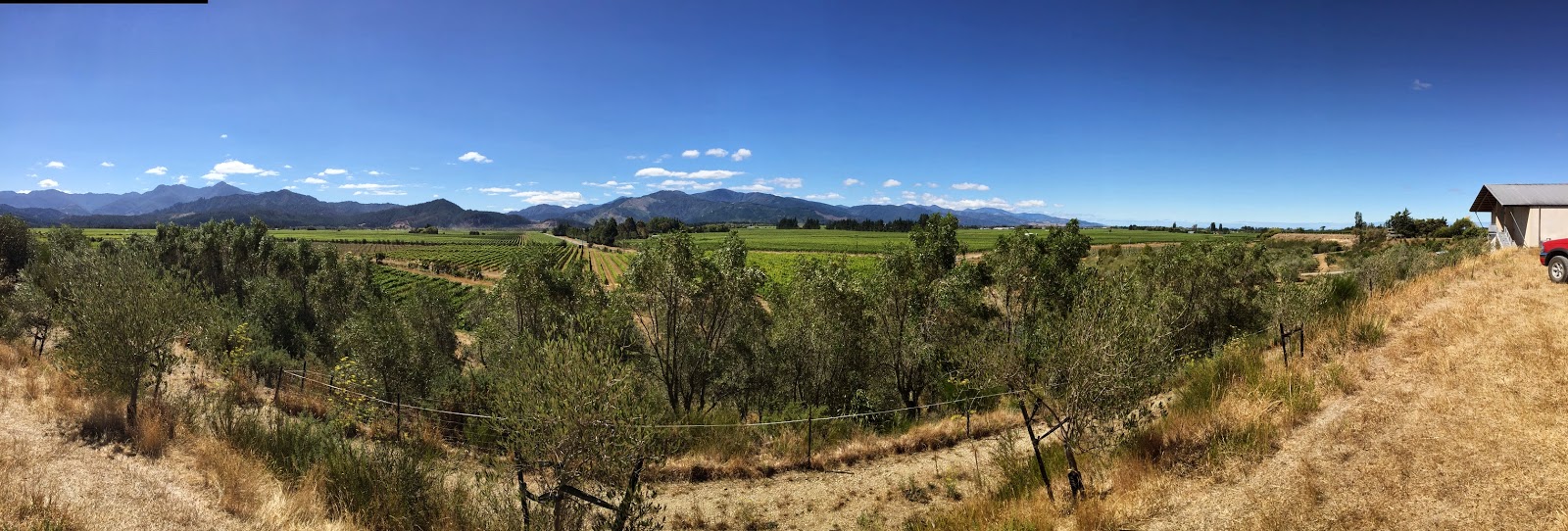Exploring With A Friend
This past week I welcomed a friend, MJ, to the Land of the Long White Cloud (Aotearoa/New Zealand). We explored areas of Wellington, had some adventures in the South Island, and ran (quite literally) around some twists and turns.
 |
| Hiking the Abel Tasman National Park |
Around each bend of our Aotearoa adventure we were in awe of the natural beauty of the world and felt truly blessed. I felt blessed not only for the stunning views and opportunity to explore, but also to be with a friend who was easy going and appreciative, who has a zest of life, and who helped me to appreciate all that this spectacular land has to offer.
Below are from our travels around Welly.
Below are from our travels around Welly.

 |
| Don't do it! Pushing the naked man in! |
 Lord of the Rings, Te Papa Lord of the Rings, Te Papa
| ||
 MJ was a trooper, she arrived late on Saturday night and got up early on Sunday to explore Wellington. A cloudy day meant we hit the farmers market briefly and visited Te Papa Museum . I had not had a chance to visit the museum so I found the museum to have wonderful exhibits, be family friendly, cover a variety of topics, and it's FREE! |
We then met up with my fellow Fulbright Teacher Scholar and good friend, Seth. We had a leisurely dinner, came home and packed for the next three days, where we would visit the South Island.
 |
| On the InterIslander Ferry! |
 |
| A bit cloudy but we brought the sunshine! |

Views of the vineyards with the mountains in the background.
The colors are as vibrant as the people in New Zealand, with generous bursts of brilliance.
Our second day was a long drive on 'cruisy' country roads. Breathtaking!
More sheep than people, with mountains in the background.
Stopped by the Nelson Lakes on our drive to Motueka.
I just can't get enough! No filters here. These ARE the real colors!
*Sea urchin and octopus *



See the dolphins at play!Hector's Dolphins
Some interesting facts:
-Dolphins' brains have more emotional capacity for empathy than people (I think we can learn a thing or two!).
-Hector's Dolphins are some of the smallest dolphins and are protected by New Zealand Government.
-Dolphins use echolocation to send out "clicks" and then receive the vibration back to "read" it.
-Because of the echolocation, Dolphins can often detect an unborn child's heartbeat even before the mother knows she's pregnant. Dolphins are often attracted to humans who are pregnant because of the double heartbeat. If you are a woman swimming, you may not know you're pregnant but a dolphin will!
Find out more on Te Ara (New Zealand's AMAZING encyclopedia)
Finally, we arrived at our hostel (yup, there's a first time for everything!). It was perfect, as we met some interesting people who gave us wonderful tips about NZ and traveling.
The next day, and I have to say this was my favorite day, we took a water taxi up the coast from Kaiteriteri to the Abel Tasman National Park and then did a short 3 hour trek (hike). I have been very lucky to have seen some beautiful places in my life, but this was like nothing I have seen. Around every turn the turquoise water was in view and the lush greenery was overhead. We heard lots of birds, especially the Tui- who sounds likes the mocking jay from Hunger Games.
Listen to the sounds we heard on our trek! Tui in the Tasman Abel
 |
| First swing bridge! |
 |
| A little scary! I decided if I'm nervous crossing the swing bridge, bungy jumping is probably not in my future :( |
I just can't get enough! No filters here. These ARE the real colors!

After our hike and tour of Abel Tasman, we drove the twisty roads back to Picton. Again, we stayed in another hostel (an interesting experience-glad I packed an extra set of sheets!). Our final day concluded with a breakfast of DELICIOUS donuts and swimming with the dolphins. We weren't actually able to swim with the dolphins because the ones we saw were Hector's Dolphins, who are protected. However, they came up to play and sprinkled our toes with their breath!


See the dolphins at play!Hector's Dolphins
Some interesting facts:
-Dolphins' brains have more emotional capacity for empathy than people (I think we can learn a thing or two!).
-Hector's Dolphins are some of the smallest dolphins and are protected by New Zealand Government.
-Dolphins use echolocation to send out "clicks" and then receive the vibration back to "read" it.
-Because of the echolocation, Dolphins can often detect an unborn child's heartbeat even before the mother knows she's pregnant. Dolphins are often attracted to humans who are pregnant because of the double heartbeat. If you are a woman swimming, you may not know you're pregnant but a dolphin will!
Find out more on Te Ara (New Zealand's AMAZING encyclopedia)
After our brush with the dolphins, we lazily boarded the ferry back to the North Island. On Friday night we went to the Night Market on Cuba Street with all its brilliant sounds, sights, and smells~Wellington Night Market! We also visited Zealandia (wildlife santuary in the middle of Welly) and the Wellington Botanic Gardens . We had a beautiful dinner at Bryan and Michelle's on Saturday night and on Sunday I ran the 1/2 marathon, Round the Bays. It was a spectacular race and one I will never forget. Sadly, on Monday I had to say goodbye to my lovely friend, however the memories and friendship will be forever lasting.












































